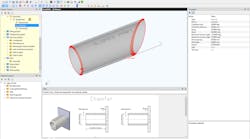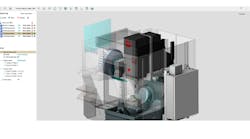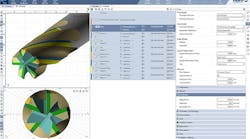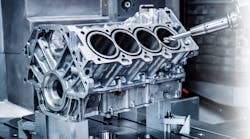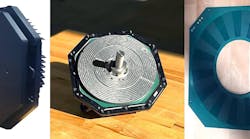A new, “dedicated strategy” for high-speed machining is reported to be the most important new capability in Delcam Plc’s PowerMill 2012 release, due to be demonstrated in the coming weeks by the CAD/CAM system developer. PowerMill is Delcam's primary CAM software for machining, specifically for three-, four-, and five-axis milling. It is a stand-alone CAM system that produces NC toolpaths from CAD models and can recieve data from any CAD system, via IGES, VDA, STL or a variety of direct interfaces.
The new capability is called Flowline Machining. As described by Delcam, it divides a toolpath between a pair of drive curves in a constant number of passes, rather than developing a varying number of passes with a constant stepover. “This approach gives a lower cycle time and superior part surface finish, minimizing wear on the cutter and the machine tool,” according to the developer.
Also in Delcam’s 2012 release are several improvements for FeatureCAM, its programming software for 2.5D, 3D and 5-axis machining. FeatureCAM 2012 reportedly includes several enhancements for faster, accurate CAM programming for production machining on lathes, mills and turn/mill machines. Two new program strategies are called “back boring” and “spiral roughing”: back boring allows more parts to be completed in a single set-up, with larger bores able to be produced on the reverse side of the part. Spiral roughing uses a single, continuous toolpath instead of a series of levels, leaving a smooth finish with no dwell marks. It can be used in place of Z-level roughing, Delcam indicated.
PartMaker 2012 — the new edition of Delcam’s program for production machining — includes a module for simulating vertical and horizontal machining centers; improved simulation for advanced multi-axis, mill-turn, and Swiss machine or lathe programming; more powerful surface machining strategies; and improved visualization throughout the programming process. It also has several productivity enhancements.
In its 2012 version of Delcam for SolidWorks (the version of the CAM that’s optimized to work with SolidWorks CAD programming), users will find the capability to program wire EDM for the first time, as well as options for programming of turning, mill-turn, drilling and two- through five-axis milling.
PowerShape is the program integrates direct modeling of surfaces, solids, triangles, and complex shapes for CAM functions, with a specific focus on “design for manufacture” projects, especially for molds and tooling. In the PowerShape 2012 release there is new functionality that tooling designers may use to address common problems in product designs, e.g., insufficient draft or inappropriate fillet sizes. “Direct modeling is faster to use than surface modeling,” Delcam explained, so the new functions can shorten the time needed to produce designs. Along with the data translation and data repair options previously offered in PowerShape, direct modeling adds a range of specific capabilities for programmers and designers.

